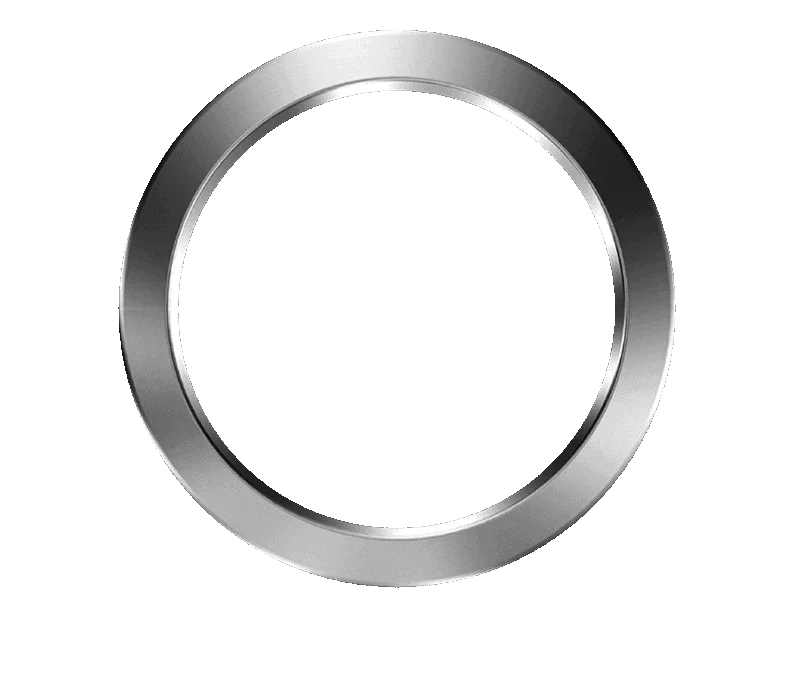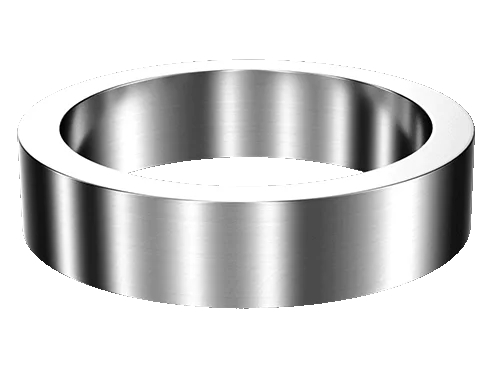Shandong Qilu lndustrial Co.,Ltd.
How Large Ring Forgings Revolutionize Aerospace Engineering
Introduction

In the realm of aerospace engineering, where every ounce of weight and every millimeter of space counts, innovations that enhance performance, reliability, and efficiency are highly prized. One such innovation making significant waves is the development and application of large ring forgings. These precision-engineered components, typically made from robust alloys like titanium, nickel, or steel, have revolutionized aerospace engineering by offering unparalleled strength, durability, and resistance to fatigue and corrosion. This blog explores in detail how large ring forgings have transformed aerospace manufacturing, their intricate manufacturing processes, diverse applications across aircraft and spacecraft, as well as their future prospects in advancing aerospace technology.
What Are Large Ring Forgings?
Large ring forgings are specialized components formed through a rigorous forging process under high pressure. Unlike castings or weldments, which may have inherent weaknesses or inconsistencies, large ring forgings are known for their uniformity and structural integrity. The process begins with the careful selection of materials tailored to withstand the extreme conditions of aerospace environments. The chosen metal billet undergoes meticulous heating and shaping, often utilizing hydraulic presses to achieve precise dimensions and mechanical properties. The resulting forgings boast superior strength-to-weight ratios and exceptional fatigue resistance, making them ideal for critical applications in aerospace engineering.
Manufacturing Process of Large Ring Forgings
The manufacturing journey of large ring forgings involves several critical steps, each contributing to the final product’s reliability and performance:
- Material Selection: Aerospace-grade alloys such as titanium, known for its high strength-to-weight ratio and corrosion resistance, or nickel alloys like Inconel, prized for their heat and oxidation resistance, are meticulously chosen based on the specific requirements of the component.
- Preparation: The selected metal billet undergoes a precise heating process, known as preheating, to facilitate forging. This step ensures that the metal is malleable enough to be shaped under immense pressure without compromising its structural integrity.
- Forging: The heart of the process involves the application of tremendous force using hydraulic presses or hammers. This force shapes the heated billet into the desired ring shape, meticulously controlled to achieve exact dimensions and mechanical properties.
- Heat Treatment: Post-forging, the forged ring undergoes heat treatment processes such as annealing or tempering. These treatments optimize the material’s internal structure, enhancing its mechanical properties and ensuring uniformity throughout the component.
- Machining and Finishing: Once heat-treated, the forged ring undergoes precision machining to achieve tight tolerances and desired surface finishes. CNC (Computer Numerical Control) machines are often employed to ensure accuracy in dimensional requirements critical for aerospace applications.
- Inspection: Quality assurance is paramount in aerospace engineering. Large ring forgings undergo rigorous inspection processes, including ultrasonic testing, magnetic particle inspection, and visual inspections. These tests verify the integrity of the material, detecting any potential defects that could compromise performance or safety.
Applications in Aerospace Engineering
Large ring forgings find extensive use in critical components across various aerospace applications:
- Jet Engines: Components such as turbine disks, shafts, and compressor rings benefit greatly from the superior strength and durability of large ring forgings. These components operate under extreme temperatures and pressures, demanding materials that can withstand such conditions without compromise.
- Airframe Structures: Fuselage bulkheads, landing gear components, and wing fittings rely on large ring forgings for their structural integrity and lightweight properties. The aerospace-grade alloys used ensure that these components can withstand the rigors of flight while contributing to overall weight reduction and fuel efficiency.
- Spacecraft: In space exploration, where reliability is non-negotiable, large ring forgings play a crucial role in components like rocket engine parts and structural elements. These forgings provide the strength and durability needed to withstand the harsh conditions of space travel, including extreme temperature differentials and vacuum environments.
Benefits of Large Ring Forgings
The adoption of large ring forgings in aerospace engineering offers several distinct advantages:
- Enhanced Strength and Durability: Large ring forgings exhibit superior mechanical properties, including high tensile and yield strengths, along with enhanced fatigue resistance. These characteristics ensure longevity and reliability under demanding operational conditions.
- Weight Reduction: Compared to alternative manufacturing methods such as castings or weldments, large ring forgings offer significant weight savings without compromising structural integrity. This reduction in weight contributes to improved fuel efficiency and increased payload capacity, essential considerations in aerospace design.
- Reliability and Safety: Aerospace-grade alloys used in large ring forgings undergo stringent quality control measures. This ensures that components meet or exceed industry standards for reliability and safety, minimizing the risk of catastrophic failure during operation.
- Cost Efficiency: While initial production costs for large ring forgings may be higher than traditional methods, their extended service life and reduced maintenance requirements often result in overall cost savings over the lifecycle of the aircraft or spacecraft.
Case Studies and Examples
Examples of Large Ring Forging Applications in Aerospace
| Application | Component | Material Used | Benefits |
|---|---|---|---|
| Jet Engines | Turbine Disks | Titanium Alloy | High strength-to-weight ratio, corrosion resistance |
| Compressor Rings | Nickel Alloy | Enhanced durability, reduced maintenance | |
| Airframe Structures | Fuselage Bulkheads | Steel Alloy | Improved structural integrity |
| Wing Fittings | Aluminum Alloy | Lightweight, aerodynamic efficiency | |
| Spacecraft | Rocket Engine Components | Inconel Alloy | Extreme temperature resistance, reliability |
Future Trends and Innovations

Looking forward, the evolution of large ring forgings in aerospace engineering continues to advance, driven by ongoing research and development efforts:
- Advanced Alloys: Researchers are exploring new alloys with enhanced properties, such as improved high-temperature resistance and reduced density, to further optimize the performance of large ring forging in aerospace applications.
- Additive Manufacturing: The integration of additive manufacturing techniques enables the production of complex geometries with reduced material waste, offering potential advancements in the design and manufacturing of large ring forging.
- Digital Twins: Utilizing digital twin technology allows for real-time monitoring and predictive maintenance of large ring forged components, enhancing operational efficiency and safety in aerospace systems.
Conclusion
In conclusion, large ring forgings represent a cornerstone of modern aerospace engineering, offering unmatched strength, durability, and reliability across a broad spectrum of applications. As the aerospace industry continues to push boundaries in terms of performance and efficiency, these precision-engineered components will play an increasingly pivotal role. By leveraging advanced materials, innovative manufacturing techniques, and rigorous quality assurance processes, large ring forging ensure that aircraft and spacecraft operate safely and efficiently in even the most challenging environments.
FAQ
Q:What are the advantages of large ring forgings over castings or weldments?
A:Large ring forgings offer superior mechanical properties, including higher strength-to-weight ratios and enhanced fatigue resistance, compared to castings or weldments. They also provide greater design flexibility and reliability in aerospace applications.
Q:How are large ring forgings inspected for quality?
A:Large ring forgings undergo rigorous inspection processes, including ultrasonic testing, magnetic particle inspection, and visual inspections. These tests ensure that the forgings meet stringent quality standards for aerospace components.
Q:What are the typical materials used in large ring forgings?
A:Materials commonly used in large ring forgings include titanium alloys, nickel alloys (such as Inconel), steel alloys, and aluminum alloys. The choice of material depends on the specific requirements of the aerospace component in terms of strength, weight, and corrosion resistance.
